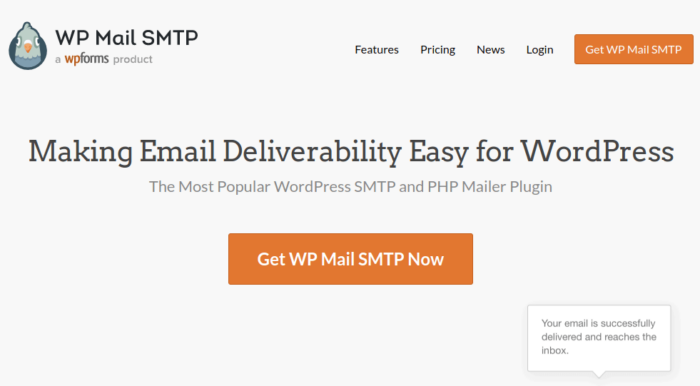Looking for a way to configure WordPress SMTP and send emails from your site?
By default, your WordPress site isn’t configured to send emails properly. Mostly, your site will use PHP mail or the wp_mail() PHP function to send emails. But your server most likely isn’t configured to use wp_mail() properly.
As a result, you’re going to get stuck with severe deliverability issues for any email that your site sends. This includes:
- Form submission alerts
- Automated eCommerce emails
- Automated emails generated by optins
And more. Missing form submissions that are sent to your inbox can lead to losing customers instantly. Automated emails are sent to your customers and if they don’t receive them, that is a very bad experience for them. Again, you’ll likely lose a bunch of customers.
The right way to resolve this issue is to configure an SMTP server to send all emails from your WordPress site.
In this article, we’re going to show you step by step how to set up WordPress SMTP and send emails in less than 30 minutes!
Let’s dive right in.
How to Configure WordPress SMTP to Send Emails
The simplest way to configure WordPress email sending capabilities on your site is to use a WordPress SMTP plugin. An SMTP plugin connects your site to an SMTP service provider. The service provider then takes care of sending your emails.
We recommend using the WP Mail SMTP plugin to configure WordPress SMTP on your site.
The WP Mail SMTP plugin will help you fix your email delivery issues in a few simple steps. And it’s not technical at all. It’s super simple and anyone can do it.
So, go ahead and install and activate the plugin. If you’re not sure how to do that, this tutorial will show you how to install a WordPress plugin.
Step #1: Configuring the WP Mail SMTP Plugin
Once you’re done installing the plugin, go to your WordPress dashboard and click on WP Mail SMTP to configure the plugin:
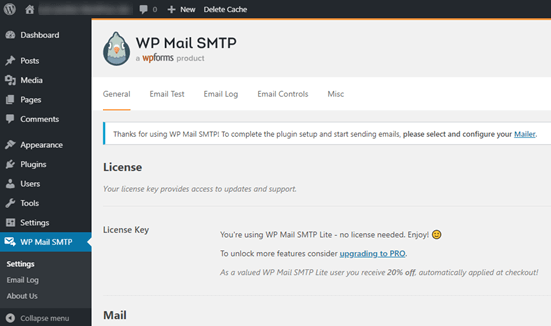
After you enter your license key, enter your email and name in the Mail section:
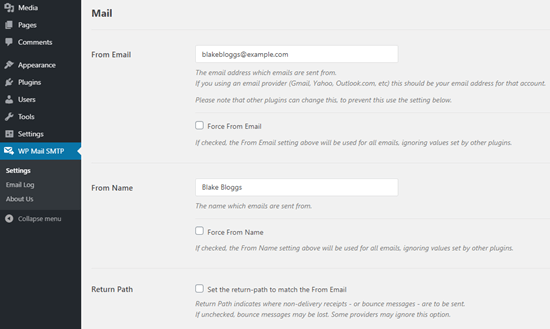
IMPORTANT: The From Email should be the same email address as the one you’ll be using for your SMTP service. If you use two different emails, you’ll keep getting errors from the email service provider dashboard.
Don’t worry if you’re using some other email address on other WordPress plugins such as WPForms. WP Mail SMTP forces other plugins to use the email address you use to configure your SMTP service automatically.
Step #2: Selecting an Email Service Provider
Next, you’ll need to choose an SMTP mailing service for your site.
We recommend using SMTP.com. But you can find a lot of different services listed in WP Mail SMTP’s integrations.
Head over to your WordPress dashboard and go to WP Mail SMTP » Settings.
Then, under Mailer, select a service provider. You can choose between a whole host of options:
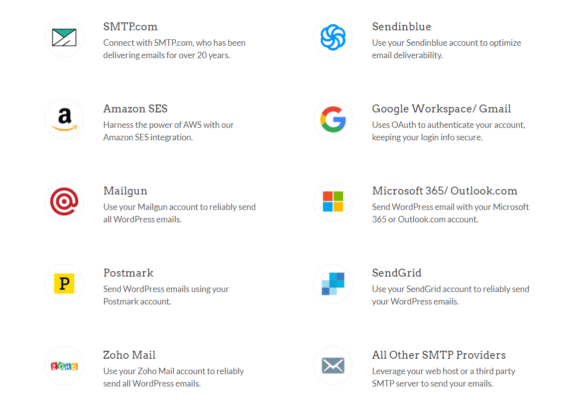

To finish setting up the WP Mail SMTP plugin, you’ll have to create an account with SMTP.com next. It’s a super popular SMTP service that allows you to send bulk emails with high delivery rates.
Step #3: Creating an SMTP Account
Go ahead and create a new account:
SMTP.com will send you multiple emails at this point. One of those emails will ask you to click an activation link. Click on the activation link to activate your account. Then, head over to the WP Mail SMTP plugin to connect your SMTP account to the plugin.
The popup will ask for an API key which you can get from your SMTP.com dashboard. Click on the Get API Key link (click on this link to get there directly):
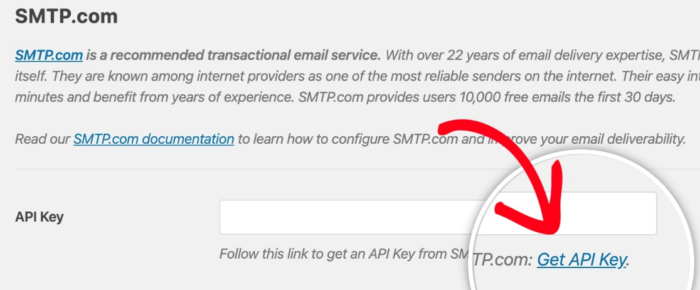
You should see a table under the API tab. SMTP should have automatically generated an API Key for you.
Copy the API Key in the Key column (do NOT use the serial number in the Default Key column):

Then paste your API key into the API Key field in WP Mail SMTP:

Finally, under the Sender Name field, click on the Get Sender Name link:

On the page that opens up, under the Manage Senders tab, you’ll see another table. Copy the name in the Name column:
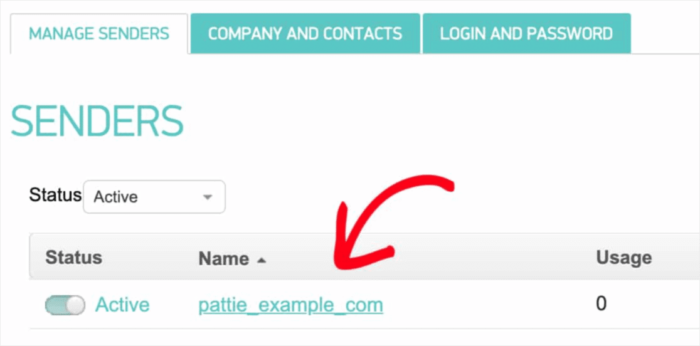
And paste it into the Sender Name field in WP Mail SMTP. Then hit Save Settings:
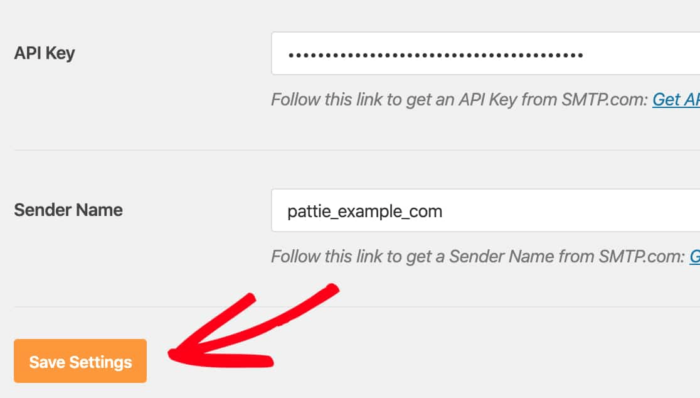
Step #4: Adding the SPF Record to Your DNS
Next, you’ll have to add the SPF record to your DNS records. The Sender Policy Framework (SPF) is how SMTP.com authenticates your emails. Implementing this step ensures that any email sent from your site won’t get automatically dumped into the Spam inbox.
Head over to the navigation menu of your SMTP.com account and click on Account » My Settings:

In the General tab, go to General Settings and look at the SPF Record field:
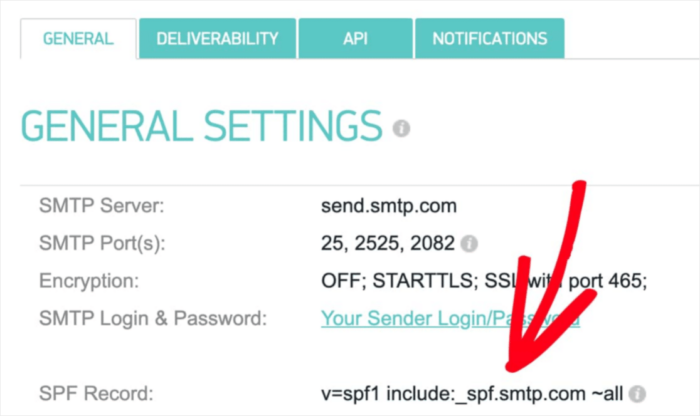
You’ll need to add this SPF record to the DNS settings for your site. Adding a new record to your DNS settings is a different process for every hosting provider. If you don’t know how to do this, check out this article on how to add SPF records.
Pro Tip: In the DNS settings, you’ll see a field called TTL (Time To Live). The default value is usually 1 hour. If you can change this record, we recommend changing it to 1 day or 86400 seconds. This will allow the server to cache this information for a full day.
Step #5: Validating Your SPF Records
If you’ve added the SPF record, then you should validate that the changes were updated. It may take up to 48 hours for the changes to reflect. So, validating the results before moving on to the next step is a good idea.
Click on this link and head to the section that says SMTP.com SPF Record Domain Check. In the Domain field, submit your website’s URL and click on Validate:
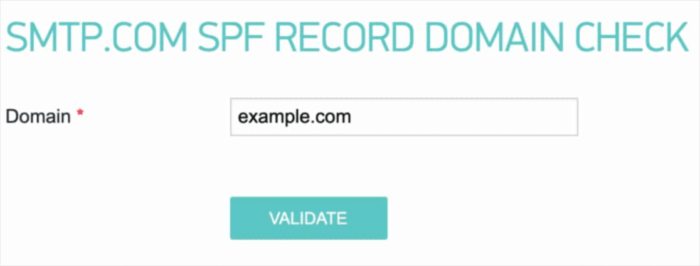
If you followed every step, you’ll see this Pass message:

And you’re done!
Step #6: Sending a Test Email
You’re done configuring WP Mail SMTP. But you should always check and verify that everything’s working properly. Head back to WP Mail SMTP in your WordPress dashboard and click on the Email Test tab:
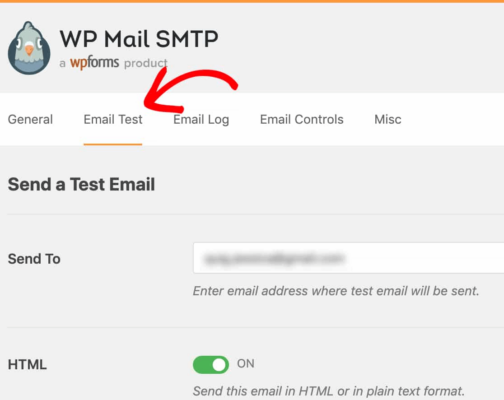
Enter any email address that you have access to and send a test email. If all went well, you should see this success message:
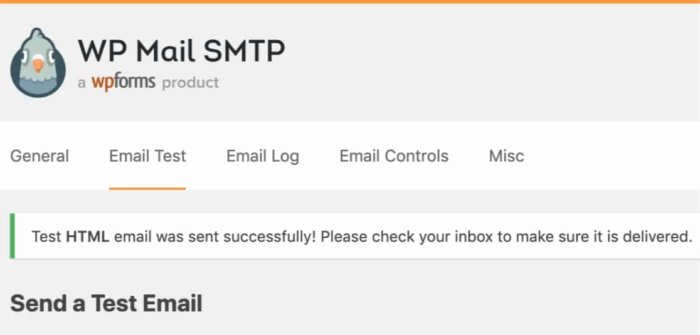
Check and confirm that you received the email in your Primary inbox. If it was sent successfully, you know that the email is getting delivered. Finally, all you have to do is verify that the email went through your SMTP.com account.
Go to the Deliverability Settings page on SMTP.com. If you see the Pass notification like this one, you did a great job:
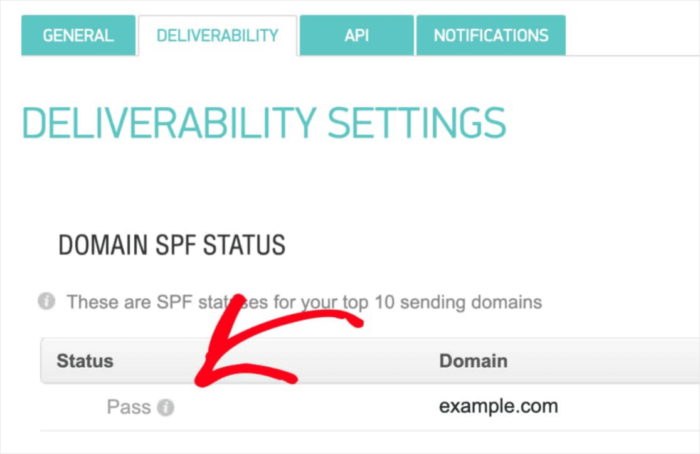
If you don’t see ‘Pass’ in the Status field, then you’ve blundered somewhere. Just revisit steps 1-4 and make sure that you didn’t miss anything.
Wrapping Up
That’s all for this one, folks!
We highly recommend that you install the WP Mail SMTP plugin because it makes configuring WordPress SMTP so much simpler. Having to do all this manually can be time-consuming and costly.
Once your WordPress email deliverability issues are fixed, you can go back to increasing your traffic, engagement, and sales in peace. Speaking of which, have you tried using push notifications yet? Push notifications are a great way to increase traffic, engagement, and sales for any business.
And if you’re starting out with push notifications, we recommend using PushEngage. PushEngage is the #1 push notification software in the market. The plugin is built to empower small businesses to compete with big brands.
So, it’s a good fit at every stage of growth whether you’re looking to start, grow, or scale your business.
If you’re just getting started with push notifications, you should also check out some of these articles:
- 7 Smart Strategies to Boost Customer Engagement
- How to Get More Traffic to Your WordPress Blog (9 Easy Ways)
- How to Boost Your Web Push Notification Opt-In Rate (7 Ways)
- How to Add a Web Notifications WordPress Plugin to Your Site
And if you haven’t already, get started with PushEngage today to get to the next level!

